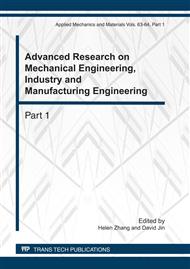p.868
p.874
p.878
p.882
p.886
p.891
p.896
p.901
p.905
Design of Current Temperature Transmitter Circuit
Abstract:
The temperature transmitter is a kind of device circuit, which is made up of temperature sensor and assistant electronic circuits. It can change temperature signal into electric signal. The paper introduces a two-wire current temperature transmitter which consists of platinum resistance and the new type integrated chip-AD693. It mainly analyzes the theoretical basis of the system and chooses an appropriate hardware implementation scheme. This paper analyzes the basic principle of temperature transmitter and the composed units of current temperature transmitter, chooses and calculates the circuit modules components, finishes the systematic design of electric circuit schematic.
Info:
Periodical:
Pages:
886-890
Citation:
Online since:
June 2011
Authors:
Keywords:
Price:
Сopyright:
© 2011 Trans Tech Publications Ltd. All Rights Reserved
Share:
Citation:


